CRATING PROCESSWe package our equipment in crates, as well as on pallets with heavy-duty packaging material, depending on the product. The bottom of the pallet that touches the floor consists of 1x4's, then 2x4's horizontally to give it a 4" space for pallet jacks and forklifts to get underneath, followed by a mixture of 1x4's, plywood, and sometimes both, depending on the weight of the product, on the floor where the product(s) sit. If remanufactured, or a machine that arrives in large frame pieces (not in boxes), product(s) is/are securely tied with the same material that is on a treadmill belt. We have found that this is the perfect material to both prevent scratches + securely mount it to the top of the pallet. We then build a crate. We use 2x4 and 2x3 framing and basically use the kick test to be sure that it is solid. Meaning if there is too much give on top when you kick it, it isn't right. Your foot should feel like you are hitting a wall when doing that. The product must have at least 2" of extra space on all sides of the pallet so it distances itself enough from possible transit issues. We then put plywood over fragile areas, like near consoles on cardio products, or other plastics. Then, we wrap the crate with several layers of clear heavy duty stretch wrap to ensure the elements of being in transit cause the smallest possible effect. The clear stretch wrap is so that warehouses and truck drivers can see that it is exercise equipment, and that it is fragile, this way, they handle our products with care. We used to put plywood around the entire crate instead of stretch wrap, but we found that shippers then handle it with less care. Many, but not all new products, basically for any products that are packaged in boxes / crates, we use a strapping machine to secure them as well as possible on the same pallets described in the first sentence, and to be sure they are not overtightened. We of course follow basic rules like heavier products on the bottom, and making it more bottom-heavy than top-heavy. We then put several layers of heavy-duty stretch wrap around both the sides of the pallet as well as around the boxes, which gives it more protection, as well as mounts them and secures them further to the pallet, preventing shifts and lost boxes in transit. Shipping damage is very very rare for us. Should a product arrive with minor or moderate damage, we have a few preferences (though not requirements) that our customer do to make the process as seamless as possible. The preferred process and definition of minor/moderate to us are below. Sign the delivery receipt / form / POD and write next to your signature 'subject to inspection' or "shipping damage". We consider minor or moderate when it appears something is missing, or an object fell on it causing damage to a couple parts. Our preference (though not a requirement and the customer's choice) is for our customer to accept the machine, and then we can send the replacement parts and a service provider to install the parts. It makes service quick and easy this way, and prevents any further. If the customer does not feel comfortable with this, they have the right to reject the delivery and contact us for the process / options from there, or they can also call us while the shipper is on site to discuss. Major shipping damage, which is extremely rare, is defined as when it appears that more than 30% of the machine appears to have been damaged. This would include both situations where the machine appears to have fallen and suffered frame damage, or, somehow the product got exposed to the elements which would mean likely exposure of the inside of the machine to the elements. In these situations, the customer should just take several pics at least without opening the packaging, write "Major Shipping Damage" in the signature area, reject the delivery, and contact us for the next steps. There is of course a gray area between moderate and major shipping damage, so, if our customer receives and is unsure, they can call us on site, and, if they still feel uncomfortable, they can always reject delivery and discuss the next steps, which includes replacement, a refund, or other requests. It can also include our suggestions based on the exacts of the situation STEP 1 - PALLETING EQUIPMENT
STEP 2 - SECURING EQUIPMENT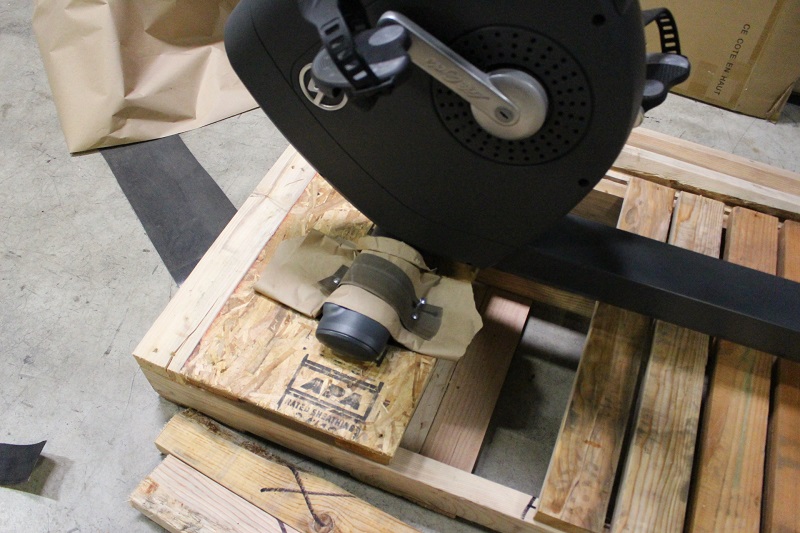
STEP 3 - Wood Crate Frame w/ 2x3's & 2x4's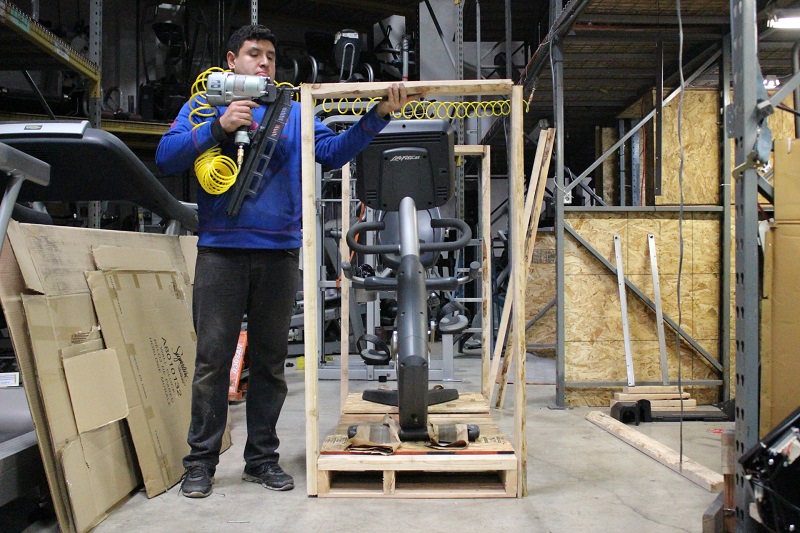 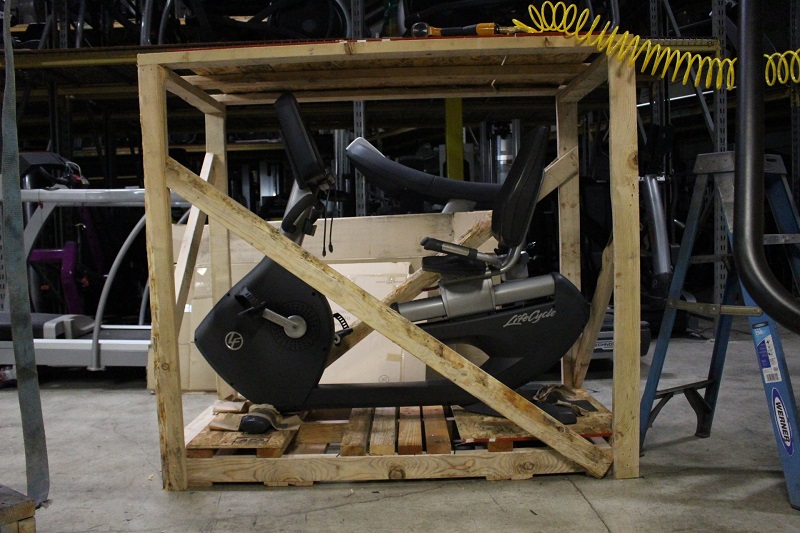
STEP 4 - Wrapping the Crate w/ Stretch Wrap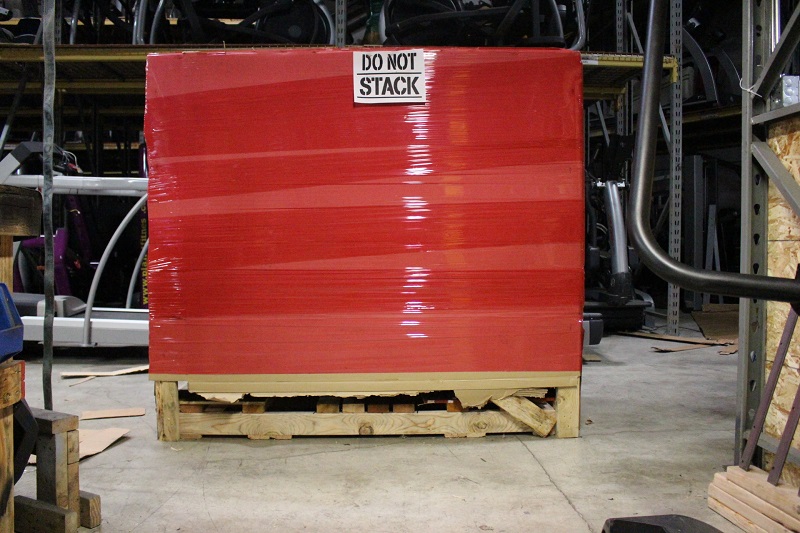
STEP 5 - MOVING CRATE TO SHIPPING AREA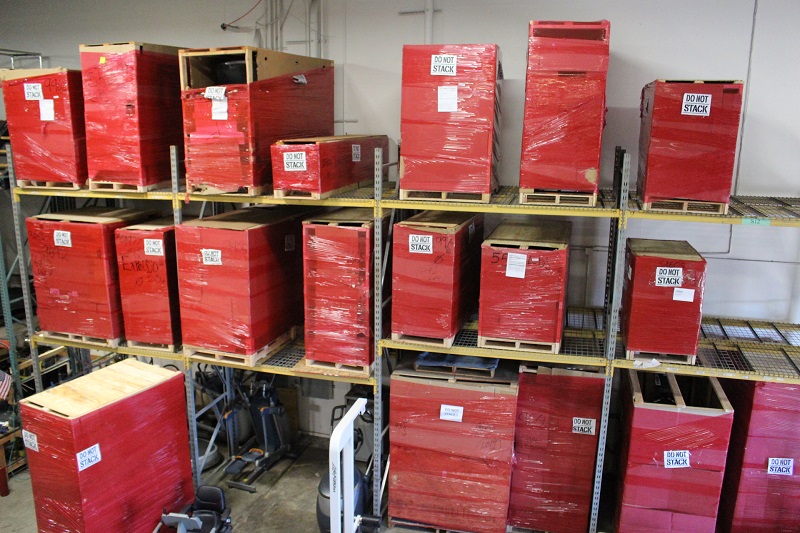 Click here to view our Warehouse Photos |

 International Sales
International Sales